Water-Soluble Sea-Island Fiber is a breakthrough material in the field of advanced fibers. This innovative composite material is characterized by its unique structure that combines two types of polymers: one water-soluble and the other water-insoluble. The resulting fiber exhibits properties that make it particularly useful in applications like filtration, environmental sustainability, and specialized industrial processes.
Water-Soluble Island-in-the-Sea Fiber is created through a process where a water-soluble polymer (commonly polyvinyl alcohol, or PVA) is wrapped around a non-water-soluble polymer in a structure known as the “island-in-the-sea” configuration. This structure is vital to the fiber’s performance and functionality, especially in specialized fields like filtration systems.
The water-soluble polymer is designed to dissolve when exposed to water or specific solvents, leaving behind a modified fiber structure. Polyvinyl alcohol (PVA) is the most commonly used water-soluble polymer for producing these fibers. PVA is known for its excellent solubility in water, biodegradability, and non-toxic nature, making it an ideal choice for environmentally-conscious applications.
The non-water-soluble polymer component of the fiber is typically a durable, solid material that does not dissolve in water. This material is responsible for providing structural integrity to the fiber. It forms the “island” within the “sea” of the water-soluble polymer. The non-water-soluble component gives the fiber its strength, flexibility, and ability to withstand mechanical stresses during its use in various applications.
The distinctive “island-in-the-sea” structure gives Water-Soluble Island-in-the-Sea Fiber a range of unique characteristics that make it suitable for various applications.
In this fiber, the island refers to the non-water-soluble polymer that is encapsulated by the water-soluble polymer. This island structure is critical for maintaining the fiber’s shape and performance before the water-soluble component dissolves. It also contributes to the fiber’s strength, making it resilient and capable of maintaining its form under various conditions.
The sea is the surrounding water-soluble polymer that holds the non-soluble polymer together. This part of the fiber dissolves when exposed to water or specific solvents, leaving behind the porous framework formed by the non-water-soluble polymer. This dissolution leads to the creation of a structure with high surface area and porosity, which is beneficial in filtration applications.
After the water-soluble polymer dissolves, the remaining porous structure becomes highly effective in filtering applications. The high surface area and interconnected pores left behind by the dissolved water-soluble component allow the remaining material to trap particles or contaminants. This makes Water-Soluble Island-in-the-Sea Fiber particularly useful for fine filtration tasks, where traditional materials may struggle to achieve the same level of precision.
The process of how Water-Soluble Island-in-the-Sea Fiber functions is a critical factor in understanding its potential applications, particularly in filtration systems.
The water-soluble component of the fiber plays a pivotal role in its unique functionality. When the fiber comes into contact with water, the soluble polymer begins to dissolve. This dissolution results in the disintegration of the surrounding material, leaving behind a fibrous, highly porous structure.
Initial Contact with Water: Upon exposure to water or solvents, the soluble polymer starts to dissolve. The rate of dissolution depends on factors such as temperature, pH levels, and the chemical properties of the water or solvent.
Formation of Porous Structure: As the water-soluble polymer dissolves, the insoluble polymer remains intact, forming a porous network. This network has a high surface area and interconnected pores, making it ideal for filtration applications.
Enhanced Filtration: The resultant porous structure can trap particles and contaminants, including microplastics, bacteria, and even chemical pollutants, depending on the size of the pores. This high-efficiency filtration is one of the key advantages of using Water-Soluble Island-in-the-Sea Fiber in various filtration technologies.
The non-soluble component of the fiber, which forms the island structure, provides physical stability. This part of the fiber is responsible for maintaining the shape and integrity of the fiber before the dissolution of the water-soluble component.
The non-soluble polymer is durable and resistant to environmental stress. It helps the fiber withstand mechanical forces and maintain its integrity during use, ensuring that the fiber performs consistently throughout its lifecycle.
While the water-soluble polymer dissolves, leaving behind the porous structure, the non-soluble polymer supports this process by ensuring that the fiber remains intact until the dissolution is complete. This makes Water-Soluble Island-in-the-Sea Fiber an excellent material for filtration devices that need to operate effectively under harsh conditions.
The unique properties of Water-Soluble Island-in-the-Sea Fiber open the door for its use in a wide range of applications. Here are some of the key areas where this material is making a significant impact.
One of the most prominent uses of Water-Soluble Island-in-the-Sea Fiber is in filtration systems. The high porosity of the fiber, which results from the dissolution of the water-soluble component, makes it ideal for filtering fine particles, liquids, and gases.
In water treatment, Water-Soluble Island-in-the-Sea Fiber can be used to filter out pollutants, bacteria, and microplastics from water sources. The dissolution of the fiber in water allows for easy disposal and ensures that the filtration material does not contribute to environmental pollution after use.
Water-Soluble Island-in-the-Sea Fiber can also be used in air filtration systems, where it is designed to capture fine particles like dust, pollen, and pollutants. Its ability to dissolve and biodegrade makes it an excellent alternative to traditional synthetic air filters, which are often difficult to dispose of.
The dissolution and biodegradability of Water-Soluble Island-in-the-Sea Fiber make it an environmentally friendly alternative to traditional synthetic materials used in filtration. As the world moves towards sustainability, this material offers a greener solution that reduces waste and improves resource efficiency.
Unlike synthetic polymers, which can take decades to decompose, Water-Soluble Island-in-the-Sea Fiber dissolves in water and biodegrades relatively quickly. This feature makes it ideal for applications where materials are disposed of after use, such as water and air filtration.
Water-Soluble Island-in-the-Sea Fiber helps reduce waste by ensuring that the fibers do not remain in the environment after they serve their purpose. This can significantly reduce landfill waste and the need for complex recycling processes.
In the medical field, Water-Soluble Island-in-the-Sea Fiber can be used in applications like drug delivery systems and wound care. The material’s biocompatibility and ability to dissolve in bodily fluids make it suitable for temporary medical uses.
Water-Soluble Island-in-the-Sea Fiber can be used in wound dressings, where it provides structural support during the healing process and dissolves over time as the wound heals. This eliminates the need for removing the dressing, reducing discomfort for patients.
In drug delivery systems, Water-Soluble Island-in-the-Sea Fiber can be used to encapsulate and release medications in a controlled manner. As the fiber dissolves, the drug is gradually released into the bloodstream, offering a novel approach to sustained drug delivery.
As research and development in the field of advanced materials continue to grow, the potential applications of Water-Soluble Island-in-the-Sea Fiber will likely expand. The material’s unique properties make it suitable for a wide variety of industries, ranging from environmental protection to healthcare.
Future advancements in Water-Soluble Island-in-the-Sea Fiber will likely focus on optimizing its dissolution rate, improving its mechanical strength, and expanding its range of applications. New techniques for producing the fibers and refining their properties could lead to even greater versatility in how this material is used.
Water-soluble island-in-the-sea fiber, a revolutionary material in the world of sustainable textiles and filtration, is gaining increasing attention for its unique properties. Its ability to dissolve in water under certain conditions and its biodegradable nature make it an environmentally friendly alternative to traditional synthetic fibers. This fiber is used across a range of industries, particularly in filtration, medical applications, and environmental protection.
The primary feature of Water-Soluble Island-In-The-Sea Fiber is its water-soluble component. This core characteristic allows the fiber to dissolve when exposed to water or specific environmental conditions, such as changes in temperature, pH, or salinity. The water-soluble component in the fiber is designed to dissolve quickly, ensuring that once the fiber is no longer needed, it can be easily removed or degraded.
The dissolution process of Water-Soluble Island-In-The-Sea Fiber is governed by the solubility of the water-soluble component. Typically, this component is a polymer that is highly soluble in water. When the fiber comes into contact with water, the polymer begins to break down and dissolve, leaving behind a minimal residue. This rapid dissolution ensures that the fiber can be fully decomposed without leaving harmful microplastics or pollutants in the environment.
One of the major environmental benefits of Water-Soluble Island-In-The-Sea Fiber is its ability to minimize pollution. Unlike traditional synthetic fibers, which persist in the environment for decades and contribute to microplastic contamination, water-soluble fibers dissolve completely and safely in water. This characteristic is particularly important in applications such as waste treatment, where minimizing the environmental impact of materials is crucial.
When the water-soluble component dissolves, the remaining fiber structure is often highly porous. The high porosity of Water-Soluble Island-In-The-Sea Fiber is an essential feature that makes it suitable for various filtration applications.
The high porosity of the fiber results in an increased surface area, which is beneficial for filtering out fine particles or impurities. In filtration processes, a larger surface area allows for better interaction with the materials being filtered, improving the overall efficiency of the system. This property makes Water-Soluble Island-In-The-Sea Fiber ideal for use in fine particle filtration, where even the smallest particles must be removed.
Water-Soluble Island-In-The-Sea Fiber is particularly effective in applications requiring high-performance filtration. Examples include air and water filtration, where the fiber can trap contaminants such as dust, bacteria, and other fine particles. The increased porosity also makes the fiber an excellent choice for use in medical and pharmaceutical filtration, where purity and precision are critical.
| Property | Description |
|---|---|
| Porosity | High porosity provides a large surface area for filtration. |
| Dissolution Time | Rapid dissolution in water, leaving minimal residue. |
| Surface Area | Increased surface area enhances the efficiency of filtration. |
| Applications | Used in filtration of fine particles, including air and water systems. |
Another critical characteristic of Water-Soluble Island-In-The-Sea Fiber is its biodegradability. After the fiber’s water-soluble component dissolves, the remaining structure degrades in an environmentally friendly manner.
The biodegradability of Water-Soluble Island-In-The-Sea Fiber ensures that it does not contribute to long-term pollution. Unlike conventional plastic-based fibers that persist for hundreds of years in landfills, water-soluble fibers are designed to break down into non-toxic byproducts. This decomposition process happens quickly and without leaving harmful residues, making the fiber an ideal choice for industries seeking sustainable materials.
The degradation process occurs through a natural biochemical reaction when the fiber interacts with microbial organisms in the environment. These microorganisms break down the fiber into simple compounds, which are either absorbed into the soil or water without causing harm to the ecosystem. The rate of degradation can be influenced by factors such as temperature, humidity, and the presence of specific bacteria, but the fiber is designed to degrade more quickly than traditional synthetic materials.
Given its biodegradability, Water-Soluble Island-In-The-Sea Fiber is widely considered a sustainable alternative in numerous industries. For instance, in the medical industry, disposable items made from this fiber, such as sutures or bandages, can dissolve after use, eliminating the need for harmful waste disposal. Similarly, in agriculture, biodegradable fibers can be used for temporary barriers or mulch, breaking down naturally after serving their purpose.
One of the most versatile features of Water-Soluble Island-In-The-Sea Fiber is its customizability. The properties of the fiber, such as porosity, strength, and toughness, can be adjusted by varying the ratio of the water-soluble and water-insoluble components during the manufacturing process.
By adjusting the ratio of water-soluble and water-insoluble materials, manufacturers can fine-tune the fiber’s characteristics to meet specific needs. For instance, increasing the proportion of water-soluble material can result in a fiber that dissolves more quickly, whereas a higher concentration of water-insoluble material can make the fiber stronger and more durable.
| Property | Adjustable Factors | Impact on Performance |
|---|---|---|
| Porosity | Ratio of water-soluble to water-insoluble components | Higher water-soluble content increases porosity. |
| Strength | Proportion of insoluble material | Higher insoluble content increases strength and durability. |
| Dissolution Rate | Amount of water-soluble material | More water-soluble content speeds up dissolution. |
| Toughness | Combination of components, including molecular structure and treatment | Adjusting content balance fine-tunes fiber toughness. |
Customizability is especially valuable in filtration applications. Filtration systems often require fibers with specific pore sizes and strength levels to efficiently capture contaminants while maintaining structural integrity. By adjusting the material’s composition, Water-Soluble Island-In-The-Sea Fiber can be tailored to suit the precise filtration needs of different industries, from pharmaceuticals to environmental cleanup.
The filtration industry has witnessed significant advances with the advent of water-soluble island-in-the-sea fibers. These innovative materials have transformed traditional filtration processes by improving efficiency, enhancing sustainability, and offering versatile solutions for various filtration challenges. Water-soluble island-in-the-sea fibers are particularly noteworthy for their high porosity, biodegradability, and ability to be customized for specific filtration needs.
One of the most significant contributions of water-soluble island-in-the-sea fibers to the filtration industry is their ability to improve filtration efficiency. Their high porosity, well-defined surface structure, and rapid dissolution properties make them ideal for capturing tiny particles and pollutants, enhancing the overall filtration process.
The porosity of water-soluble island-in-the-sea fibers refers to the number and size of the pores within the material. High porosity translates to a larger surface area, which allows more particles to be trapped during filtration. This structural feature is especially beneficial in applications that require the removal of fine pollutants such as dust, bacteria, or even hazardous chemicals.
The dissolution of the water-soluble components in these fibers ensures that they do not clog the filter layer over time. As the water-soluble component dissolves, it prevents the accumulation of materials that could otherwise impede filtration performance. This characteristic leads to sustained high-efficiency filtration, even after prolonged use, which is a critical advantage in many industries.
The efficiency of water-soluble island-in-the-sea fibers extends beyond general filtration. These fibers are highly effective at capturing specific contaminants, such as fine chemicals, pollutants, and microorganisms. In water treatment applications, for example, these fibers can remove harmful substances, including heavy metals, bacteria, and organic compounds, ensuring cleaner and safer water. Similarly, in air filtration systems, the fibers can capture tiny airborne particles like dust, pollen, and pathogens, improving air quality in industrial, medical, and residential settings.
| Property | Description |
|---|---|
| Porosity | High porosity enhances the surface area available for capturing particles. |
| Surface Structure | Well-defined surface structures improve particle adhesion and filtration. |
| Dissolution | Dissolves to prevent clogging and maintain high filtration efficiency. |
| Pollutant Removal | Efficient removal of fine particles, chemicals, and microorganisms. |
In recent years, environmental sustainability has become a top priority across industries. Water-soluble island-in-the-sea fibers contribute significantly to environmental protection by offering an eco-friendly alternative to traditional filtration materials. Unlike conventional synthetic fibers, which are typically non-biodegradable and accumulate in landfills, water-soluble fibers can be safely disposed of through hydrolysis or natural degradation.
Water-soluble island-in-the-sea fibers are designed to degrade naturally when exposed to water, minimizing their impact on the environment. The water-soluble component dissolves, leaving behind a biodegradable residue that does not contribute to long-term pollution. This process helps avoid the buildup of non-degradable waste that can persist in the environment for decades, such as microplastics from synthetic fibers.
In addition, the degradation process does not produce harmful byproducts, ensuring that the fiber’s environmental impact is minimal. This makes water-soluble island-in-the-sea fibers a valuable alternative to traditional materials that contribute to land, water, and air pollution.
The environmental benefits of water-soluble fibers make them particularly suitable for use in industries that prioritize sustainability, such as water treatment, agriculture, and medical applications. In water treatment, for example, these fibers can be used as filters that break down and dissolve after use, eliminating the need for disposal in landfills. Similarly, in the medical field, water-soluble island-in-the-sea fibers are used in disposable medical products, such as bandages and sutures, that biodegrade after use.
| Feature | Environmental Impact |
|---|---|
| Biodegradability | Breaks down naturally into non-toxic byproducts, reducing pollution. |
| Non-Toxic | Does not release harmful substances during degradation. |
| Waste Reduction | Reduces non-degradable waste, promoting a circular economy. |
| Eco-Friendly Disposal | Dissolves or degrades safely, avoiding landfill accumulation. |
The efficient use of resources and waste reduction are central goals in modern industries. Water-soluble island-in-the-sea fibers help achieve these objectives by minimizing the amount of waste generated in filtration processes.
The key benefit of these fibers lies in their ability to dissolve or degrade after use. Traditional filter materials, such as synthetic fibers, often require disposal in landfills, contributing to waste accumulation. However, water-soluble island-in-the-sea fibers dissolve in water, leaving no residue behind, and degrade naturally in the environment. This unique feature dramatically reduces the volume of waste generated by filtration materials.
In addition to their inherent biodegradability, water-soluble island-in-the-sea fibers can also promote recycling and reuse. Once dissolved, these fibers can potentially be repurposed as organic material in agricultural applications or safely returned to the ecosystem without causing harm. By reducing waste disposal costs and promoting recycling, these fibers help industries adopt more sustainable practices.
In industries where filtration materials are replaced frequently, such as in water treatment plants or healthcare settings, water-soluble fibers significantly reduce waste. For instance, in medical applications, disposable filters made from water-soluble fibers dissolve after use, eliminating the need for special disposal methods or incineration, which can be costly and environmentally harmful.
| Benefit | Description |
|---|---|
| Waste Reduction | Dissolves after use, leaving no harmful waste behind. |
| Recycling Potential | Can be repurposed as organic material or safely returned to the ecosystem. |
| Lower Disposal Costs | Reduces the need for specialized waste disposal and incineration. |
| Sustainability | Minimizes waste generation, supporting a circular economy. |
One of the most impressive features of water-soluble island-in-the-sea fibers is their high level of customization. Filtration needs vary significantly across different industries, and the ability to adjust the fiber’s properties—such as porosity, strength, and dissolution rate—makes these fibers highly adaptable for a wide range of applications.
The ratio of water-soluble to water-insoluble components in these fibers can be adjusted to tailor the material for specific filtration requirements. For example, in applications requiring fine particle removal, the porosity and surface structure of the fiber can be optimized for higher filtration efficiency. On the other hand, for applications that require more durable filtration, such as in industrial air filtration systems, the fiber’s strength and toughness can be increased by adjusting the insoluble component ratio.
Water-soluble island-in-the-sea fibers can be used in a variety of filtration applications, including air, water, and chemical filtration. Their ability to adapt to different media is particularly useful in industries such as pharmaceuticals, where highly specific filtration is required to ensure product purity. In environmental applications, these fibers can be customized to filter a wide range of contaminants, from heavy metals to organic pollutants, making them a versatile and valuable material.
| Property | Customizable Feature | Impact on Filtration |
|---|---|---|
| Porosity | Adjusted by varying the ratio of soluble to insoluble components. | Enhances efficiency in capturing fine particles or larger contaminants. |
| Strength | Increased by adjusting the insoluble material ratio. | Improves durability for long-term use in industrial filtration systems. |
| Dissolution Rate | Controlled by the proportion of water-soluble components. | Faster dissolution for applications requiring quick biodegradation. |
| Filtration Type | Tailored for air, water, or chemical filtration needs. | Customizes performance for specific contaminants or media. |
Water-soluble island-in-the-sea fibers (WS-ISF) represent an innovative class of fibers that have garnered increasing attention across various industries due to their unique properties. These fibers are characterized by a core-shell structure, where the core material is insoluble and the outer shell is water-soluble, making them ideal for numerous applications requiring environmental sustainability and efficient filtration.
Water treatment is one of the most critical applications of WS-ISF, as it directly impacts the environment and human health. With the increasing prevalence of pollutants in water sources, including microplastics, bacteria, and toxic chemicals, efficient filtration solutions are in high demand. WS-ISF fibers, with their unique water-solubility and filtration efficiency, offer a sustainable solution for these challenges.
Microplastics have become a significant environmental concern in recent years. They are found in oceans, rivers, lakes, and even drinking water. These small plastic particles are difficult to remove using conventional filtration methods, as they can easily pass through traditional filters. The water-soluble nature of island-in-the-sea fibers makes them ideal for trapping microplastics. The fibers can capture and hold onto these tiny particles, preventing them from contaminating water sources.
Once the fibers have completed their filtration process, they dissolve completely, eliminating the need for disposal. This makes WS-ISF a sustainable and eco-friendly alternative to traditional filter materials, which often contribute to waste accumulation in landfills or water bodies.
Another crucial aspect of water treatment is the removal of harmful microorganisms such as bacteria and viruses. Waterborne diseases are a significant health concern in many parts of the world, making efficient microbial filtration a priority. Water-soluble island-in-the-sea fibers possess antimicrobial properties, making them effective at trapping and removing bacteria, viruses, and other pathogens from water sources.
The fibers can be designed with specific properties that enable them to bind to microorganisms and prevent their passage through filtration systems. Once the fibers have completed their filtration process, they degrade in water, ensuring that no harmful residue remains.
In addition to physical contaminants, water sources can also be polluted with hazardous chemicals, such as heavy metals, pesticides, and industrial effluents. These chemicals can pose serious environmental and health risks. Water-soluble island-in-the-sea fibers can be engineered to adsorb and remove these chemicals from water, providing an efficient and environmentally friendly method of chemical filtration.
By targeting specific types of pollutants, WS-ISF fibers can be tailored to meet the needs of different water treatment applications, from municipal water purification to industrial wastewater treatment. The fibers degrade after use, leaving no harmful residues behind.
Water-soluble island-in-the-sea fibers also have promising applications in air purification, particularly in environments where fine particles, dust, allergens, and other pollutants need to be filtered from the air. Industrial processes, such as manufacturing, mining, and chemical production, often produce airborne particles that pose health risks to workers and the surrounding environment. The water-soluble nature of these fibers makes them an attractive option for air filtration systems.
One of the primary uses of WS-ISF in air purification is the removal of fine particles and dust. These particles are often small enough to evade traditional air filtration systems, posing serious health risks when inhaled. The island-in-the-sea fibers have a large surface area that can effectively capture and trap fine particles, providing a highly efficient filtration mechanism.
The solubility of the fibers further enhances their effectiveness. After capturing the particles, the fibers can dissolve or degrade in water, reducing waste and enabling easier disposal compared to traditional filters, which often require complex cleaning or disposal methods.
Allergens and pollens are common triggers for respiratory issues such as asthma, allergies, and other respiratory conditions. In industrial or urban environments, high concentrations of these allergens can exacerbate health problems. Water-soluble island-in-the-sea fibers can be utilized in air purifiers to capture allergens and pollens, improving air quality and reducing the risk of allergic reactions.
The fibers’ ability to dissolve in water after use ensures that they do not contribute to environmental waste. This makes them a sustainable solution for air filtration, particularly in environments that require continuous purification.
Volatile Organic Compounds (VOCs) are emitted from industrial processes, solvents, paints, and various chemicals. These compounds can be harmful to human health and contribute to air pollution. Water-soluble island-in-the-sea fibers can be designed to adsorb and remove VOCs from the air, offering a high-efficiency filtration solution for environments with high concentrations of these compounds.
By utilizing the fibers in air purifiers, industries can maintain cleaner, safer air while minimizing environmental impact, as the fibers degrade naturally after use.
In addition to their use in environmental applications, water-soluble island-in-the-sea fibers hold significant promise in the medical field. Their biodegradability, biocompatibility, and filtration capabilities make them ideal for a variety of medical applications, particularly in the areas of wound care, drug delivery, and bodily fluid filtration.
The use of water-soluble island-in-the-sea fibers in wound dressings represents an innovative advancement in medical technology. Wound dressings are essential for promoting healing and protecting wounds from infection. Traditional wound dressings often require removal and replacement, which can cause additional discomfort for the patient.
Water-soluble fibers, when used in wound dressings, can dissolve as the wound heals, eliminating the need for removal. This can reduce the risk of infection and promote a faster recovery process. Additionally, the fibers’ antimicrobial properties can help prevent bacterial growth, further enhancing the safety of the wound dressing.
Water-soluble island-in-the-sea fibers can be used in drug delivery systems to release medications in a controlled manner. These fibers can encapsulate drugs, protecting them from degradation and allowing for a slow, sustained release. The fibers’ solubility allows them to dissolve in the body, ensuring that no waste is left behind after the drug has been released.
This makes them ideal for applications such as oral drug delivery, where slow release is often desired to maintain therapeutic levels of the drug in the bloodstream. Additionally, the fibers can be engineered to release drugs at specific sites within the body, improving the efficacy of treatment.
Water-soluble island-in-the-sea fibers can also be employed in devices designed to filter bodily fluids, such as blood or lymph. These fibers’ high-efficiency filtration capabilities make them suitable for use in medical filtration systems, including dialysis machines and blood filters. The fibers can capture impurities, toxins, and other harmful substances from bodily fluids, improving patient outcomes.
Once the filtration process is complete, the fibers dissolve naturally, reducing the need for complex cleaning procedures and ensuring that no waste is left behind in the medical system.
| Property | Traditional Filters | Water-Soluble Island-In-The-Sea Fibers |
|---|---|---|
| Environmental Impact | High waste generation, non-biodegradable | Biodegradable, reduces waste after use |
| Filtration Efficiency | Varies depending on material and design | High filtration efficiency for fine particles and pollutants |
| Cost | Generally lower upfront cost | May be higher due to advanced materials and manufacturing |
| Maintenance | Requires cleaning or replacement | Dissolves after use, no cleaning required |
| Applications | Water treatment, air filtration, etc. | Water treatment, air purification, medical devices |
<h2>Introduction to Water-Soluble Sea-Island Fiber</h2> <h3>What is <a href="/product/watersoluble-seaisland-fiber/" target="_blank"><strong style="font-weight: bold;">Water-Soluble Sea-Island Fiber</strong></a>?</h3> <...
READ MORE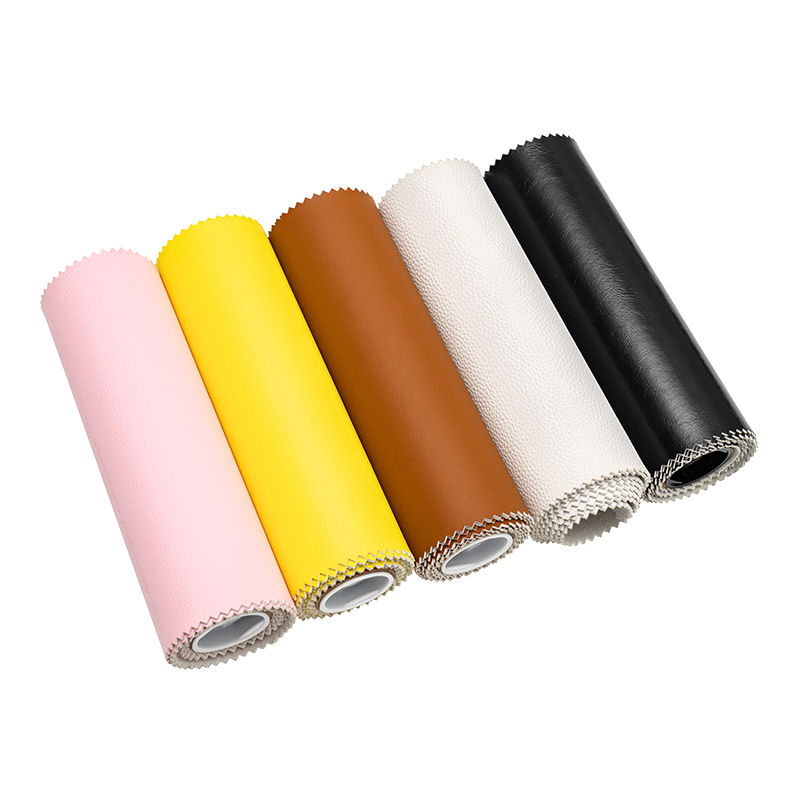
Introduction to Water-Soluble Sea-Island Fiber What is Water-Soluble Sea-Island Fiber? Water-soluble sea-islan...
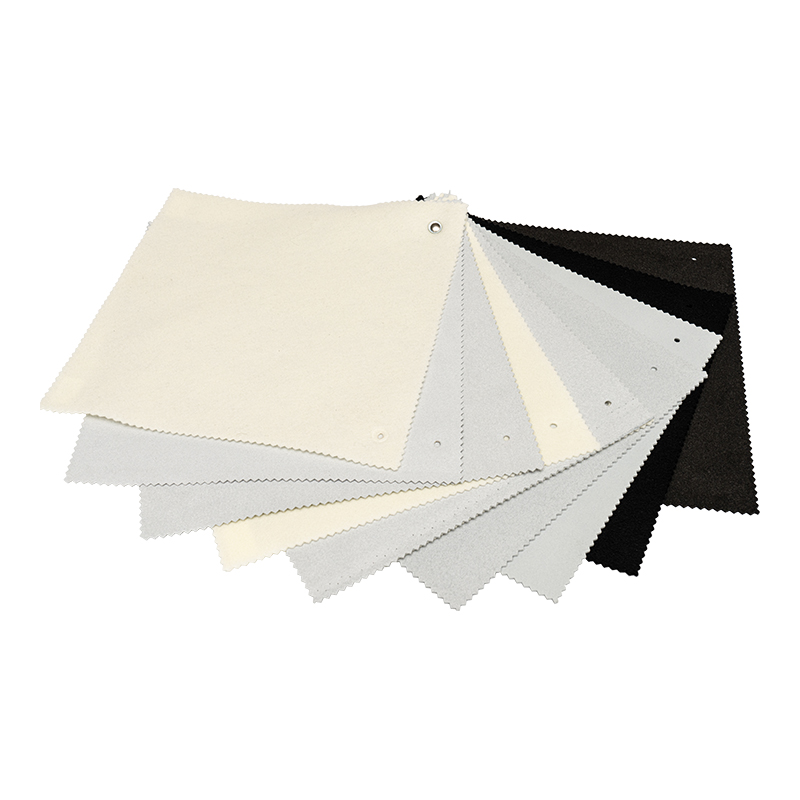
What is Water-Soluble Island-in-the-Sea Fiber? Water-Soluble Sea-Island Fiber is a breakthrough material in th...
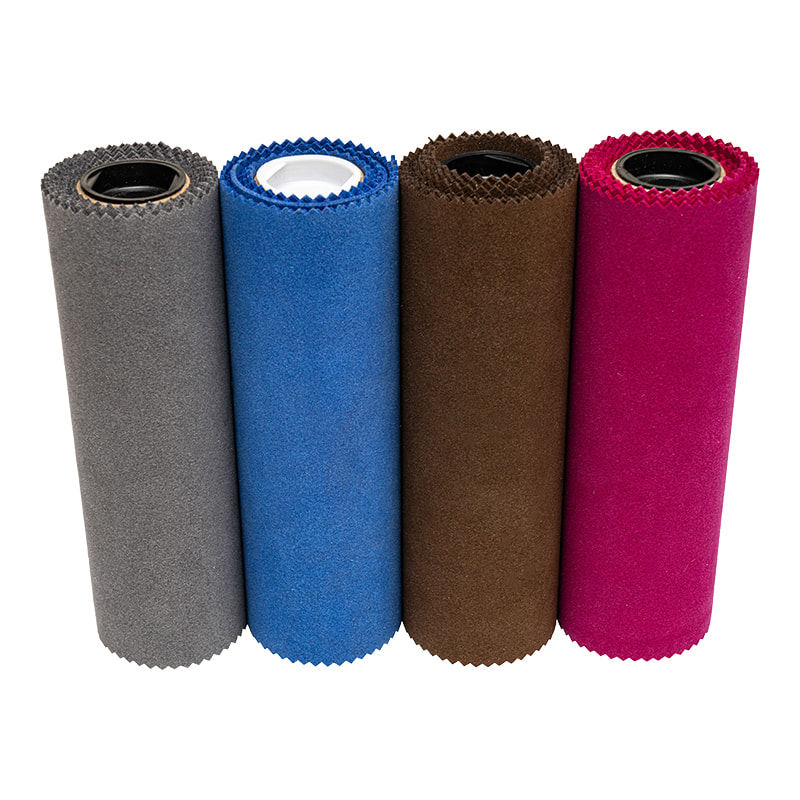
Introduction of Water-Based Microfiber Fabric What is Microfiber Fabric? Microfiber fabric is a type of textil...
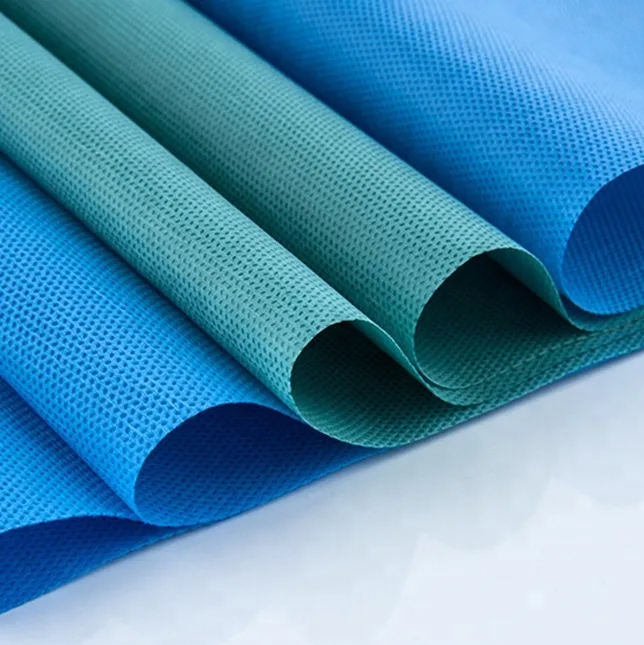
Introduction Water-soluble sea-island fiber nonwoven fabric is a groundbreaking innovation in the textile indu...
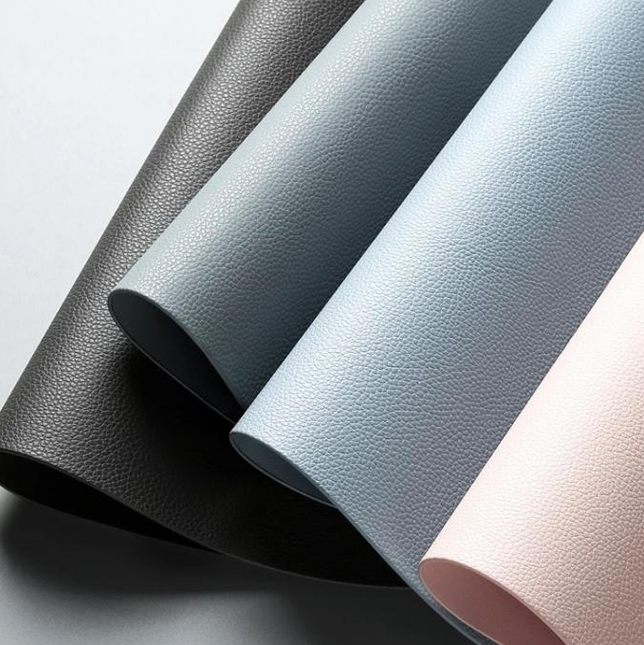
What is Water-Soluble Sea-Island Fiber? Definition and Basic Structure Water-soluble sea-island fiber is a spe...
Address : 30 Kexing Road, xiaocao'e Town, Yuyao City.Ningbo City,Zhejiang Province
Fax : 0086-0574-6226 5558
Tel: 0086-0574-6226 5558
Email: [email protected]
Ningbo Hengqide Chemical Fiber Technology Co., Ltd. All Rights Reserved. ALL RESERVED.
 Custom Bio-Based Water-Soluble Polyester Fiber Manufacturers
Custom Bio-Based Water-Soluble Polyester Fiber Manufacturers

 英语
英语 中文简体
中文简体